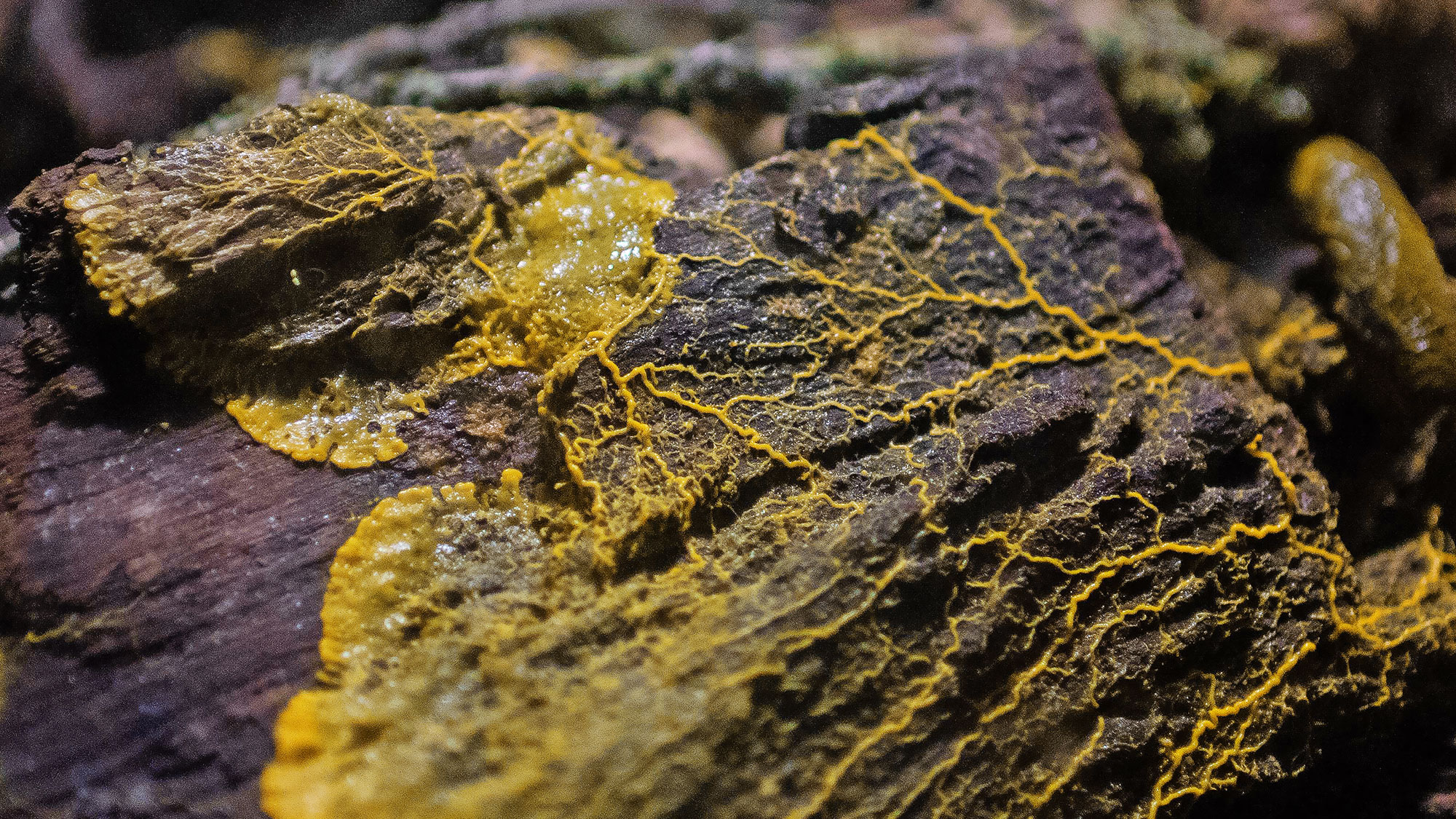This Brainless 'Blob' Could Take Over the Paris Zoo, If You Give It Enough Oatmeal
What has one cell, no brain, and loves oatmeal? This blob!

The Paris Zoological Park has added a brand-new blob to their collection. No, it's not a jellyfish. It's not even an animal, really — more like a living pile of old yellow silly string with a powerful hunger for fungus.
As you can imagine, scientists have had a hard time classifying such an organism. It looks like a fungus, yet moves like an animal. It has no brain, yet can "learn" to navigate complex mazes in a few hours on its curious quest for food. What is this thing?
Technically, it's called a slime mold (aka, Physarum polycephalum) — a single-celled organism capable of growing up to square meters in size, though most specimens don't grow beyond a few square centimeters or inches. They're found all over the world, usually on the undersides of leaves and logs, where they like to hunt fungi and bacteria. In the lab, however, the molds have a hunger for oatmeal — and that has allowed researchers to unlock their weird growth potential.
To capture food, slime molds stretch out long veins of goo that can squiggle around obstacles or through mazes with surprising efficiency. In one 2010 study, scientists laid out dollops of oatmeal in a pattern representing Tokyo and the 36 surrounding towns. When let loose to feed, the slime mold branched out in a network similar to Tokyo's existing train system, connecting the food piles with impressive efficiency.
But wait, it gets weirder. Other studies have shown that slime molds can actually follow their own slime trails back to a food source for subsequent feedings, suggesting this brainless organism has a sort of spatial memory and problem-solving prowess. When two or more slime molds merge together, they can share what they've learned and continue finding the most efficient path to food. Occasionally, hundreds of individual slime molds can combine into a giant "plasmodium," making decisions through a sort of hive mind. (Not bad for a creature with no brain cells.)
On the subject of mating, did you know that slime molds have more than 720 sexes? It's true — thanks to some weird chromosomal alchemy.
In humans, sex is determined by the combination of chromosomes carried by a mating sperm cell and an ovule. A sperm cell can carry either an X or a Y chromosome, while an ovule will always carry a Y, resulting in a new cell with either XX chromosomes (a female) or XY chromosomes (a male).
Sign up for the Live Science daily newsletter now
Get the world’s most fascinating discoveries delivered straight to your inbox.
For slime molds, things get a little… stickier. Instead of having just two types of sexual chromosomes (X or Y), a slime mold’s sex is determined by three different locations or "loci" on their chromosomes, each of which has many different alleles (or gene variations).
"To date, at least 16, 15 and 3 alleles are known to exist at each of the three loci," Audrey Dussutour, a slime mold researcher at the Research Centre on Animal Cognition of Toulouse University, told Live Science in an email. In other words, slime molds have 720 possible sex chromosome combinations. That's a lot — but luckily, two slime mold spores don’t need to have the same sexual type to mate. "To cross efficiently, spores must carry different alleles," Dussutour said.
It's no exaggeration when Paris Museum of Natural History director Bruno David calls slime molds "one of nature's mysteries." You can see the mystery for yourself now at the Paris Zoological Park.
- Extreme Life on Earth: 8 Bizarre Creatures
- Photos: World's Cutest Baby Wild Animals
- The 12 Weirdest Animal Discoveries
Originally published on Live Science.


Brandon is the space/physics editor at Live Science. His writing has appeared in The Washington Post, Reader's Digest, CBS.com, the Richard Dawkins Foundation website and other outlets. He holds a bachelor's degree in creative writing from the University of Arizona, with minors in journalism and media arts. He enjoys writing most about space, geoscience and the mysteries of the universe.










